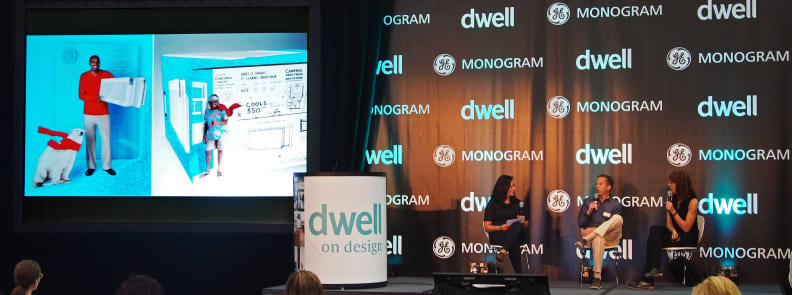GE, Quirky Discuss 'The End of Invention as We Know It'
How crowdsourcing is changing innovation for companies big and small
 Credit:
Credit:
Products are chosen independently by our editors. Purchases made through our links may earn us a commission.
Mass manufacturing is the past. Custom manufacturing is the future.
That’s the message Kevin Nolan, GE’s vice president of technology, delivered during an event at Dwell on Design L.A. yesterday. Flanked by Quirky president Doreen Lorenzo, he laid out the rationale for his company’s alliance with the upstart online innovation platform.
GE, of course, is one of the largest mass manufacturers on the planet—owners of a huge library of patents and producers of a dazzling array of products, from light bulbs to jet engines. Quirky, on the other hand, was most famous at the time for making a bendy power strip.
While their discussion covered a broad range of subjects, Nolan and Lorenzo agreed that the rise of social media has fundamentally altered the way products are conceived, marketed, and purchased.
“Garages are going to come back and be in style,” Nolan said. “The age of the maker is upon us.”

This poses serious challenges for a deeply traditional company like GE. While it has unbeatable expertise in mass production, it has little experience with the kind of crowdsourcing that drives much of today’s innovation. Nolan says he and his colleagues were impressed by how quickly Quirky gets things done, and they want to make GE faster, and more responsive to customers.
One way to do that is to make its patents available to the masses and see what they come up with. And that’s exactly what GE did: The Inspiration Platform allows Quirky users to browse and use thousands of GE patents to create product concepts and submit them for the Quirky design process.
{{vimeo '63738112'}}
According to Lorenzo, the site receives an average of 4,000 to 5,000 idea submissions every week. She added that while Quirky has only 250 employees, it has 130 products in the pipeline, and expects to release about 70 of those this year.
As many as 30% of those proposed products are connected home solutions—a symptom of both the market demand for home automation and the company’s push for adoption of its Wink smart home platform. As an added incentive, Quirky has also waived the usual $10 idea submission fee for any Wink-related product.
It’s easy to be cynical about GE’s tactics. You could reasonably argue that it’s asking the public to do its dirty work and reaping the profits. But Lorenzo was quick to note that Quirky’s revenue-sharing model is unusually generous. Ten percent of the revenue from each finished product is returned to the community, with 4% going to the inventor and 6% divided among the “influencers” who helped refine its name, style, price, and features.
Regardless, GE seems pleased with the early results of the collaboration. The highest-profile release thus far has been the Aros, a window A/C unit that can be controlled via smartphone. It’s been a resounding success from a business perspective, with millions in sales and a hefty half-million-dollar payday for its inventor, former DOE executive Dr. Garthen Leslie.
{{vimeo '89431213'}}
